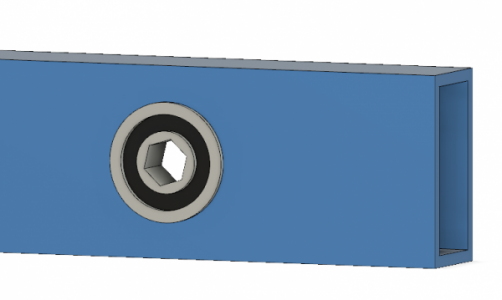Interesting discussion. Bearing fits can be tricky, depending on the precision of the bearing especially. If I understand correctly, you are trying to press fit a flanged bearing (the kind with just the flange and no external flange with bolt holes) into the end of a square aluminum tube or a hole in 1/4" plate.
I suspect that the bearing will not stay in place in a tube, loctite or no, if all you're relying on is a press fit. You only have contact with the bearing at four small contact points and I don't think it will stay in place. Could be wrong but I wouldn't try it.
You might get away with it in plate. Probably the best option would be either a line-to-line fit (bore size = OD of bearing) or perhaps 0.0002" under at most if you want to minimize the impact of the bore on internal bearing clearances. Here, you are talking about a bore with really tight tolerances and I'm not sure you'll do that with a reamer in a drill press. There is a good deal more to reaming with accuracy than it might seem. I'm attaching a doc below that might shed some light on this.
If I had to do this, I would contact the bearing manufacturer and discuss it with them. If internal bearing clearances are pretty loose then I would try to use your CNC router to get the bore dead on size at 1.250" and try for a line-to-line fit and use loctite to lock it in. A precision reamer of this size would be expensive so unless your budget allows for it and some experimentation, I would not do that.
Another option is to take your stuff to a machine shop and see if they will bore the plates for you because that is really what you need here. Explain that its for the kids and I bet they will be most cooperative.
A final option is to buy flanged bearings with external plates with bolt holes. This eliminates the need for a precision press fit, is stronger and changing the bearings is simpler.



